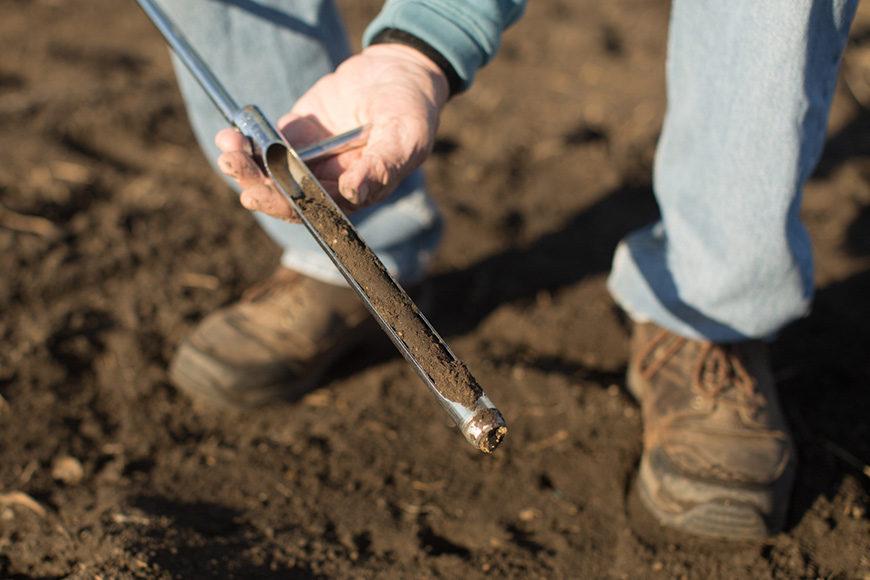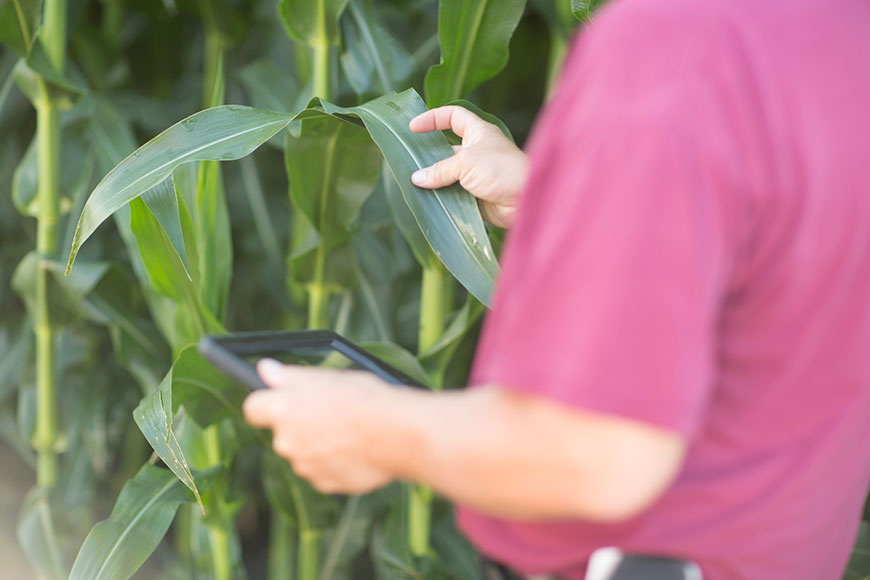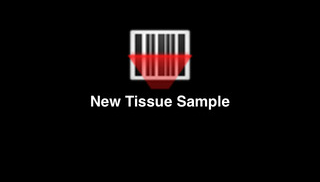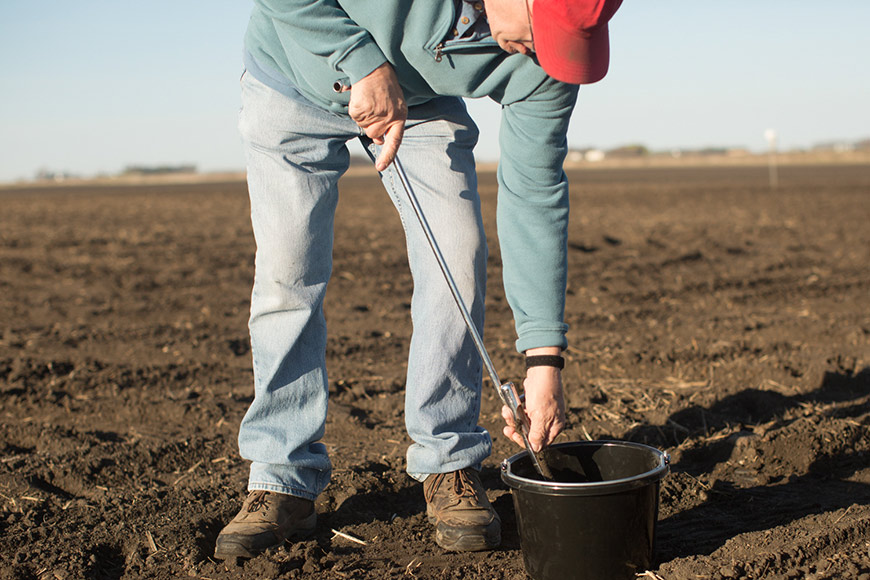Spring Soil Sampling Is No Longer Optional

Timely soil sampling is an essential part of any fertilization program. It’s crucial to understanding your soil — the nutrients it needs and those it doesn’t. Mineralization alone can’t provide enough nutrients to create adequate levels for your crop. Sampling will indicate what’s present in your soil so you’ll know what you need to add to optimize ROI and yield potential. Here’s what to keep in mind as you prepare your 2019 soil sampling strategy.
Timing
Many farmers choose to soil sample in the fall. But fall sampling is prone to variation. Conditions could be dry, wet or cold. If you applied your fertilizer in the fall, research shows that the most stable time to soil sample is after planting.1-3 During that time, temperatures are typically about the same from year to year, as are moisture levels. You’ll get more consistent results if you sample after you plant. If you just fertilized your field in the spring, sampling after planting will give varied soil test results, and should not be done.
Frequency
Soil sampling used to be recommended every four years. However, with weather fluctuations in recent years and the increased yields that farmers have been harvesting, more experts are recommending soil sampling every two years. For example, if you happen to sample in a dry year, your test will indicate you have a high volume of stored-up nutrients in the soil. Using this number for the next three years may lead to you underestimate what you actually need for that time period.
As a general rule, the more often you soil sample, the better. It’s hard to pay for more services in a challenging ag economy. But consider this: Why would you spend money on additional fertilizer if you didn’t need to, or risk overestimating the nutrient levels in your soil on the basis of less-frequent sampling?
Interpreting the sampling report
Be sure to meet with your agronomist to review the soil sampling report. Labs vary in the way they analyze samples, so having someone who understands these differences and can accurately interpret the results is valuable. For example, with phosphorus, you need to understand which testing method was employed in order to use the correct interpretation chart. It’s important to use the correct interpretation chart for any nutrient applications you perform.
Increasing yields, increasing rates
Because yields nationwide are trending higher, fertilization rates should also increase to match the need and push yields more. However, a lot depends on region, environment, soil type and the management style of the farmer. Each acre should be treated as its own entity, and it’s important to understand what is needed nutritionally for your exact acre. This makes soil sampling all the more important to ensure you are measuring nutrient levels precisely and making strategic application decisions.
Part of a comprehensive plan
WinField United has all the resources and expertise you need to develop a solid fertilization program. Our lab partner, SureTech, offers soil and tissue testing to help assess plant nutrient availability. But sampling reports are just one component of your overall management strategy. You and your agronomist can combine Answer Plot® data, yield data from your combine, R7® Tool satellite imagery and crop modeling tools like the R7 Field Monitoring Tool to fashion a total farm plan. And with in-season tissue sampling data, you can monitor how much of your soil nutrients are actually being taken up by your crop. Likewise, variable-rate nutrient applications can help you target your investment by focusing placement exactly where it’s needed rather than doing a broadcast application.
Be sure to work with your agronomist to coordinate soil sampling this spring. It can help you get a handle on what you need this season and help you build a foundation to determine future micronutrient needs.
1. Vetsch JA, Kaiser DE. Evaluation of Potassium Fertilization Strategies for Corn and Soybean: the Buildup Phase. 2018 North Central Extension–Industry Soil Fertility Conference. Vol. 34:145-154.
2. Grava J, Spalding GE, Caldwell AC. Effect of drying upon the amounts of easily extractable potassium and phosphorus in Nicollet clay loam. Agron J. 53:219-221, 1961.
3. Rakkar MK, Franzen DW, Chatterjee A. Evaluation of soil potassium test to improve fertilizer recommendations for corn. Open J. Soil Sci. 5:110-122, 2015.
© 2019 WinField United. Answer Plot®, R7® and WinField® are trademarks of WinField United.
Timing
Many farmers choose to soil sample in the fall. But fall sampling is prone to variation. Conditions could be dry, wet or cold. If you applied your fertilizer in the fall, research shows that the most stable time to soil sample is after planting.1-3 During that time, temperatures are typically about the same from year to year, as are moisture levels. You’ll get more consistent results if you sample after you plant. If you just fertilized your field in the spring, sampling after planting will give varied soil test results, and should not be done.
Frequency
Soil sampling used to be recommended every four years. However, with weather fluctuations in recent years and the increased yields that farmers have been harvesting, more experts are recommending soil sampling every two years. For example, if you happen to sample in a dry year, your test will indicate you have a high volume of stored-up nutrients in the soil. Using this number for the next three years may lead to you underestimate what you actually need for that time period.
As a general rule, the more often you soil sample, the better. It’s hard to pay for more services in a challenging ag economy. But consider this: Why would you spend money on additional fertilizer if you didn’t need to, or risk overestimating the nutrient levels in your soil on the basis of less-frequent sampling?
Interpreting the sampling report
Be sure to meet with your agronomist to review the soil sampling report. Labs vary in the way they analyze samples, so having someone who understands these differences and can accurately interpret the results is valuable. For example, with phosphorus, you need to understand which testing method was employed in order to use the correct interpretation chart. It’s important to use the correct interpretation chart for any nutrient applications you perform.
Increasing yields, increasing rates
Because yields nationwide are trending higher, fertilization rates should also increase to match the need and push yields more. However, a lot depends on region, environment, soil type and the management style of the farmer. Each acre should be treated as its own entity, and it’s important to understand what is needed nutritionally for your exact acre. This makes soil sampling all the more important to ensure you are measuring nutrient levels precisely and making strategic application decisions.
Part of a comprehensive plan
WinField United has all the resources and expertise you need to develop a solid fertilization program. Our lab partner, SureTech, offers soil and tissue testing to help assess plant nutrient availability. But sampling reports are just one component of your overall management strategy. You and your agronomist can combine Answer Plot® data, yield data from your combine, R7® Tool satellite imagery and crop modeling tools like the R7 Field Monitoring Tool to fashion a total farm plan. And with in-season tissue sampling data, you can monitor how much of your soil nutrients are actually being taken up by your crop. Likewise, variable-rate nutrient applications can help you target your investment by focusing placement exactly where it’s needed rather than doing a broadcast application.
Be sure to work with your agronomist to coordinate soil sampling this spring. It can help you get a handle on what you need this season and help you build a foundation to determine future micronutrient needs.
1. Vetsch JA, Kaiser DE. Evaluation of Potassium Fertilization Strategies for Corn and Soybean: the Buildup Phase. 2018 North Central Extension–Industry Soil Fertility Conference. Vol. 34:145-154.
2. Grava J, Spalding GE, Caldwell AC. Effect of drying upon the amounts of easily extractable potassium and phosphorus in Nicollet clay loam. Agron J. 53:219-221, 1961.
3. Rakkar MK, Franzen DW, Chatterjee A. Evaluation of soil potassium test to improve fertilizer recommendations for corn. Open J. Soil Sci. 5:110-122, 2015.
© 2019 WinField United. Answer Plot®, R7® and WinField® are trademarks of WinField United.




